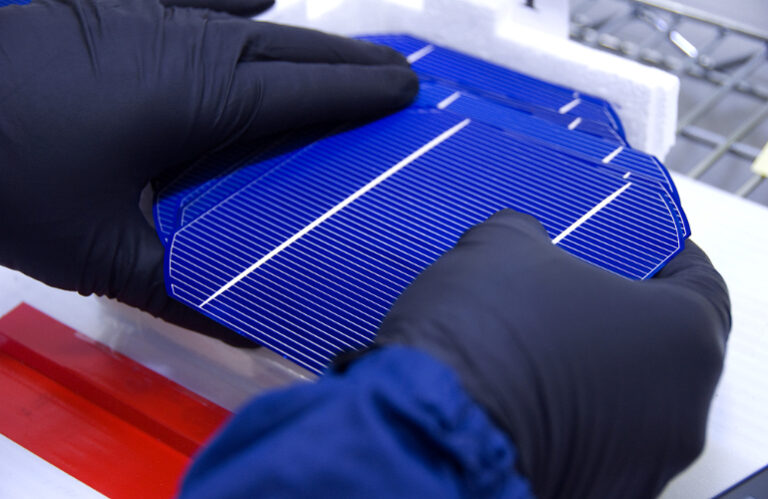The US Treasury Department and the Internal Revenue Service (IRS) released this additional guidance on the Inflation Reduction Act’s domestic content bonus (45X) for the PTC and ITC. The groups released their final rules last year.

File photo of solar cells at SolarWorld’s manufacturing facility in Oregon. Oregon Department of Transportation
The latest guidance has been updated and builds on the domestic content safe harbor that allows clean energy developers to rely on Dept. standard cost percentages. of Energy (rather than obtaining direct cost information from suppliers) to determine eligibility for the domestic content incentive. Today’s guidance reflects improved standard values that better reflect the characteristics and costs of applicable project components and manufactured product components in the marketplace, as analyzed by the DOE.
Now there are optional opportunity cost percentages for solar project developers using solar cells made with domestically produced wafers, to appropriately recognize cost differences for manufacturers using cells made with domestic wafers, thereby increasing the incentives for onshore production of wafers are enlarged.
The guidance also provides a variety of updates to clarify the use of the safe harbor tables, including:
- Solar: The updated tables update cost percentages, make certain adjustments to the characterizations of applicable project components and manufactured product components, and provide clarifying definitions.
- Domestic solar wafers: For each solar table, there are new optional opportunity cost rates for projects using household solar cells manufactured with household wafers.
- Onshore wind: The updated onshore wind table includes minor adjustments to the characterizations of applicable project components and manufactured product components.
- Battery Electrical Storage System (BESS): The updated table updates cost percentages, makes certain adjustments to the characterizations of applicable project components and manufactured product components, and provides clarifying definitions.
In addition, today’s guidance provides additional clarity on the use of the tables for retrofits, projects using elective pay (also known as direct pay), as well as carport and floating solar projects. Taxpayers can use the Safe Harbor tables in this guidance for projects that begin construction up to 90 days after the issuance of further guidance. View the safe harbor tables here.


